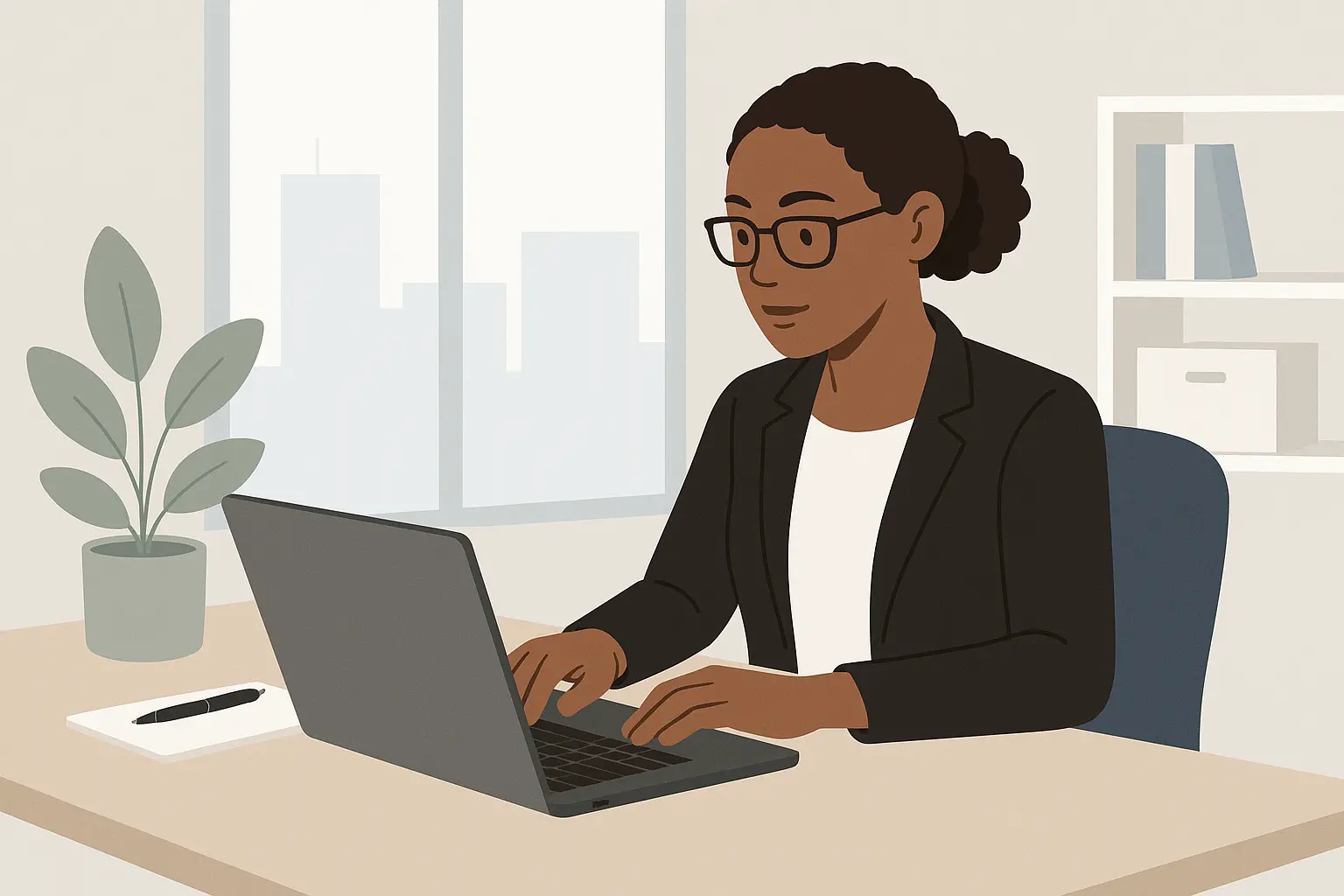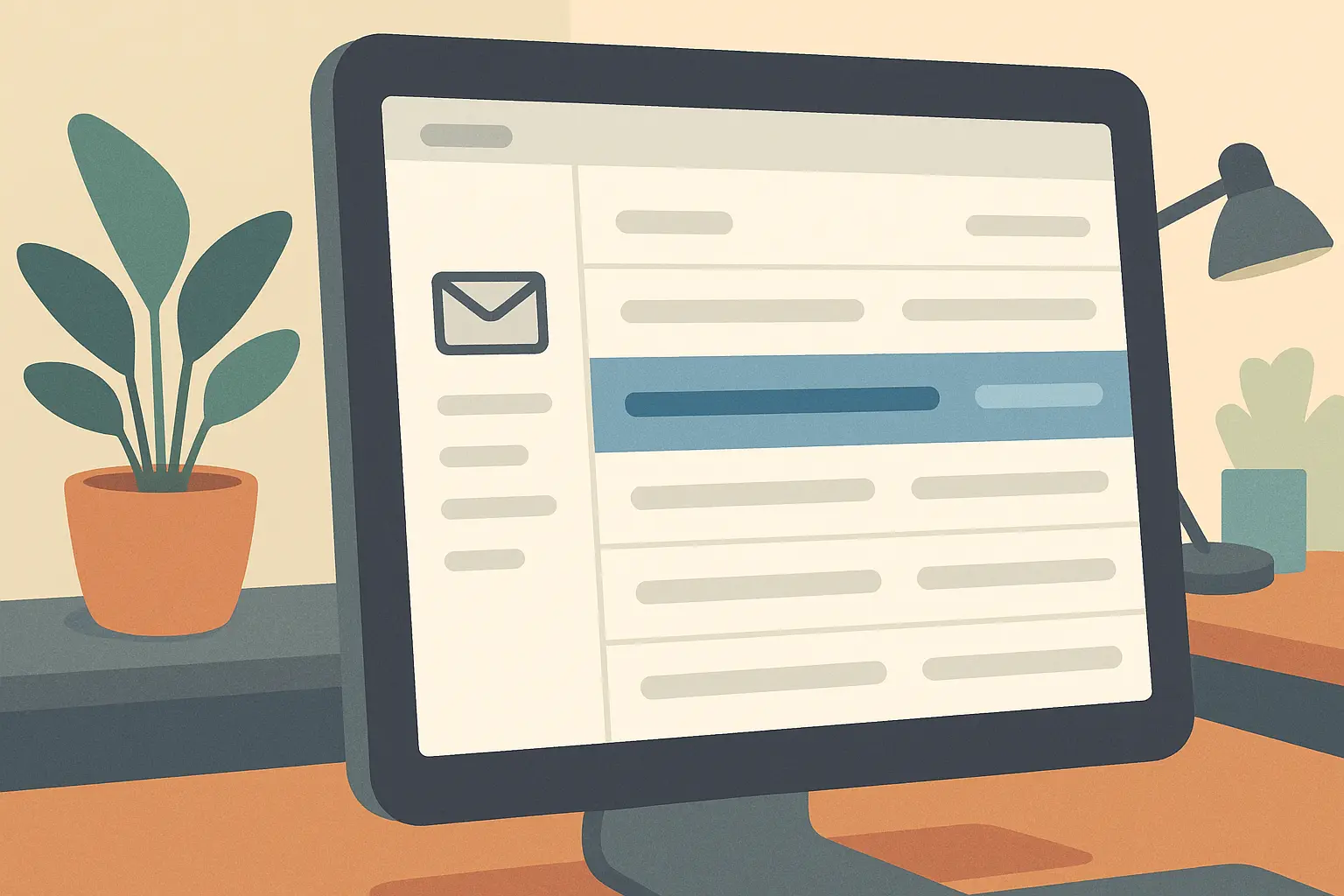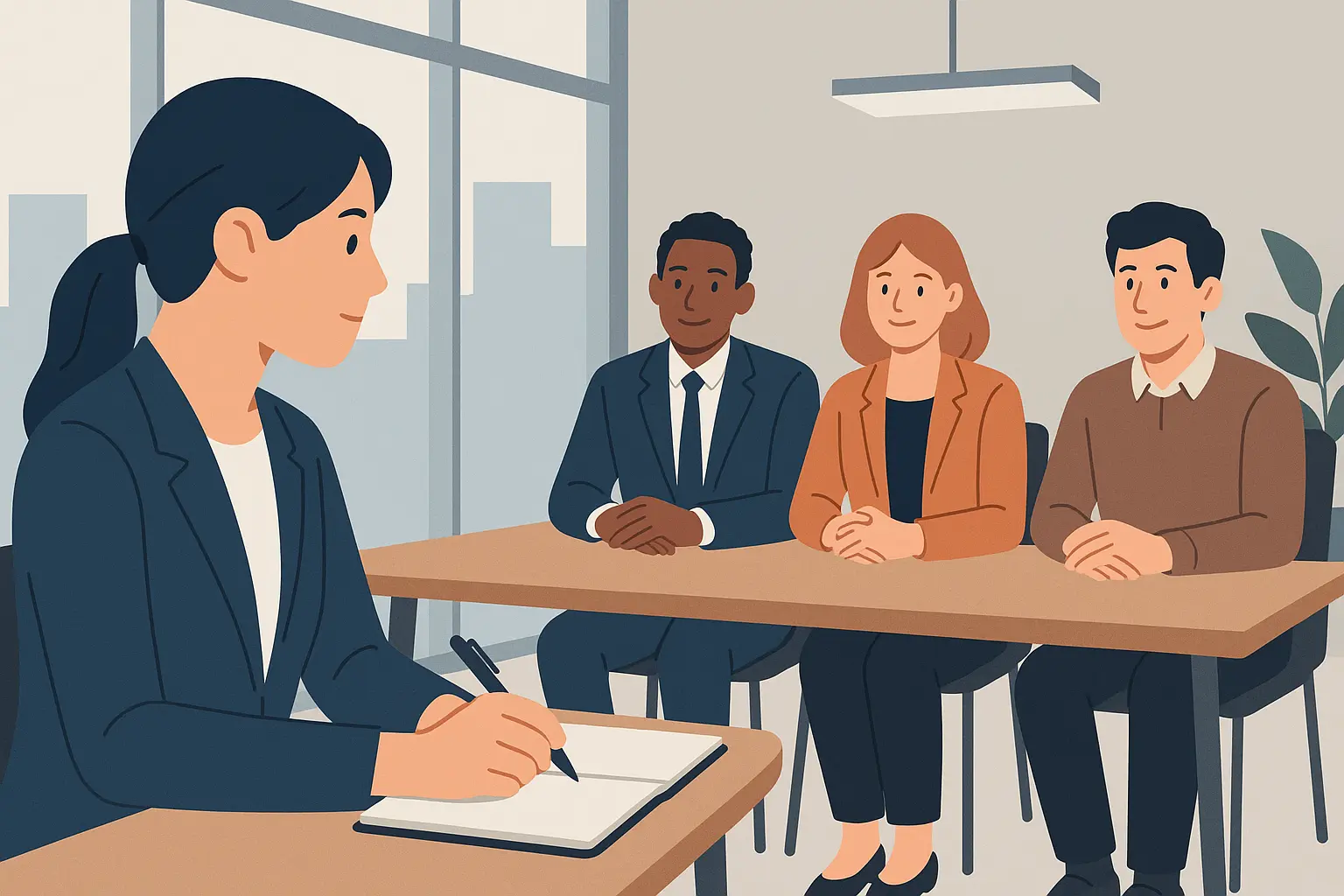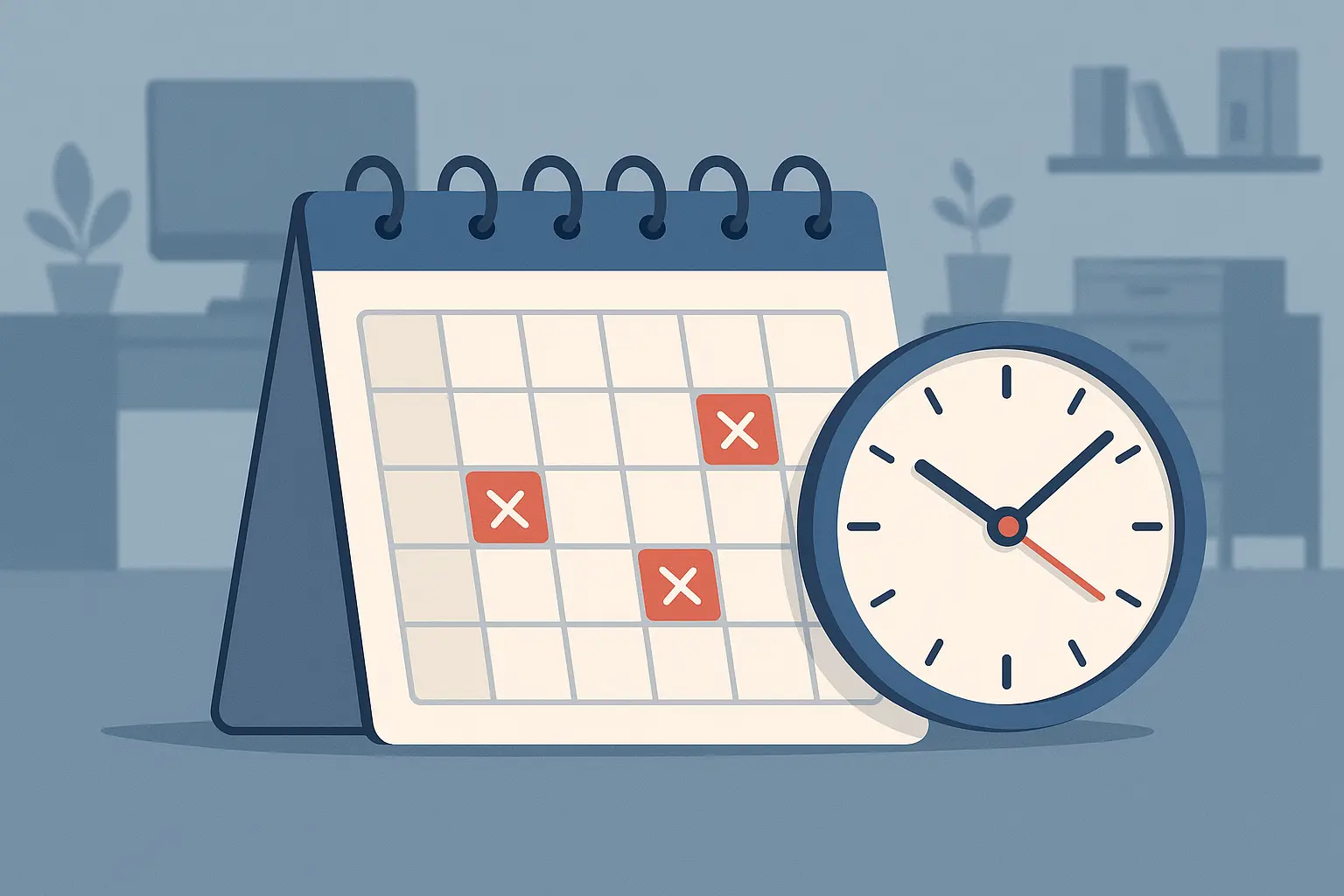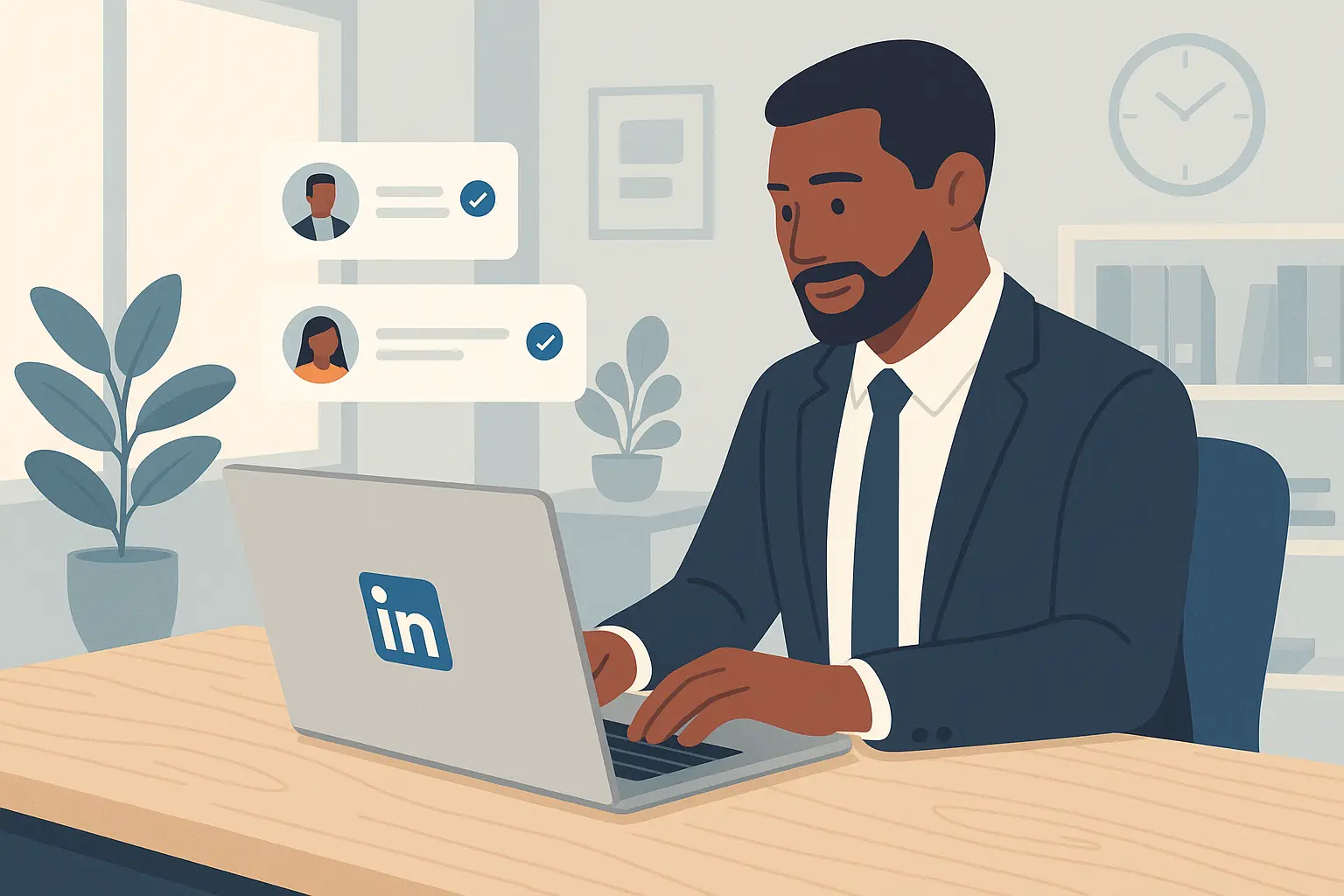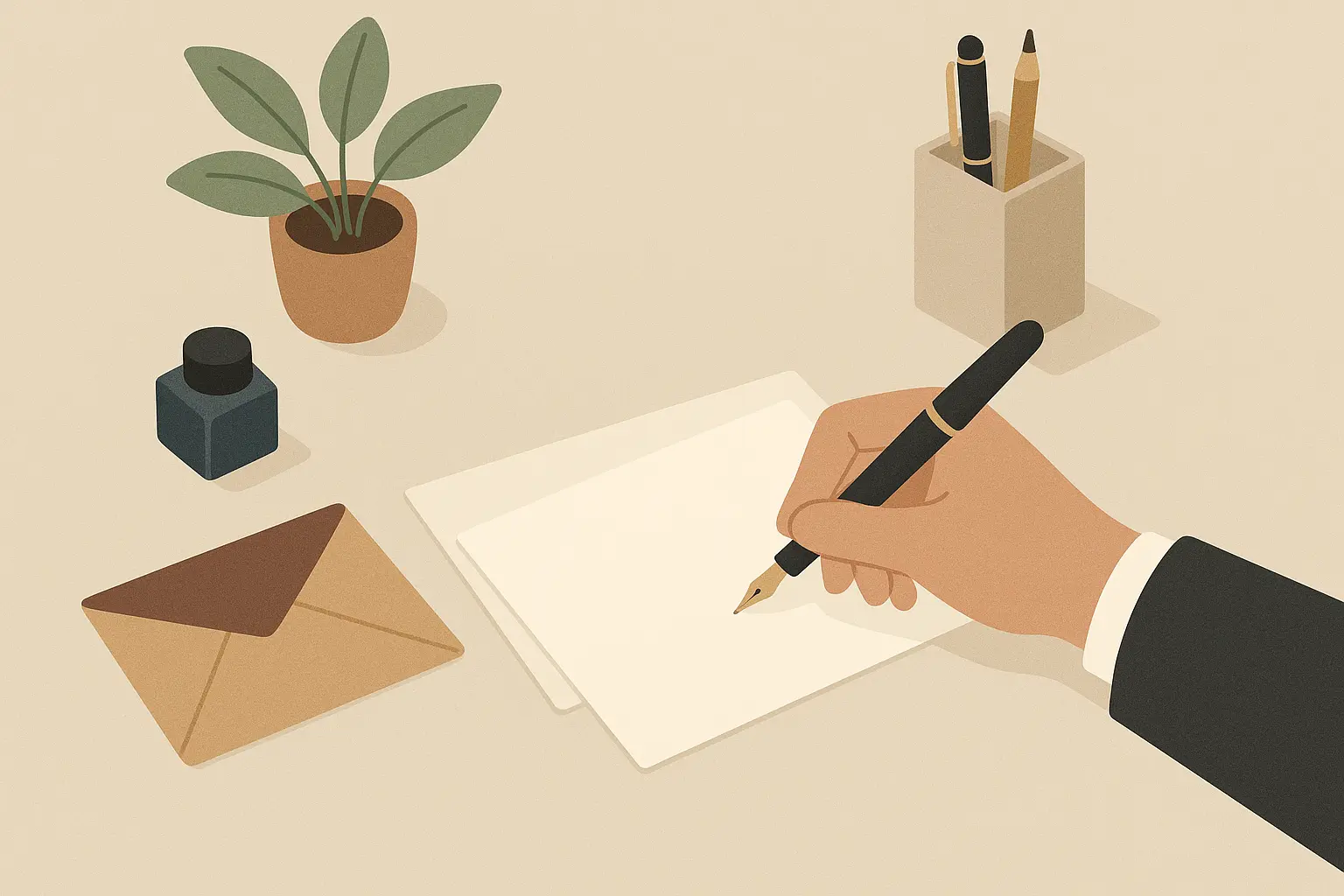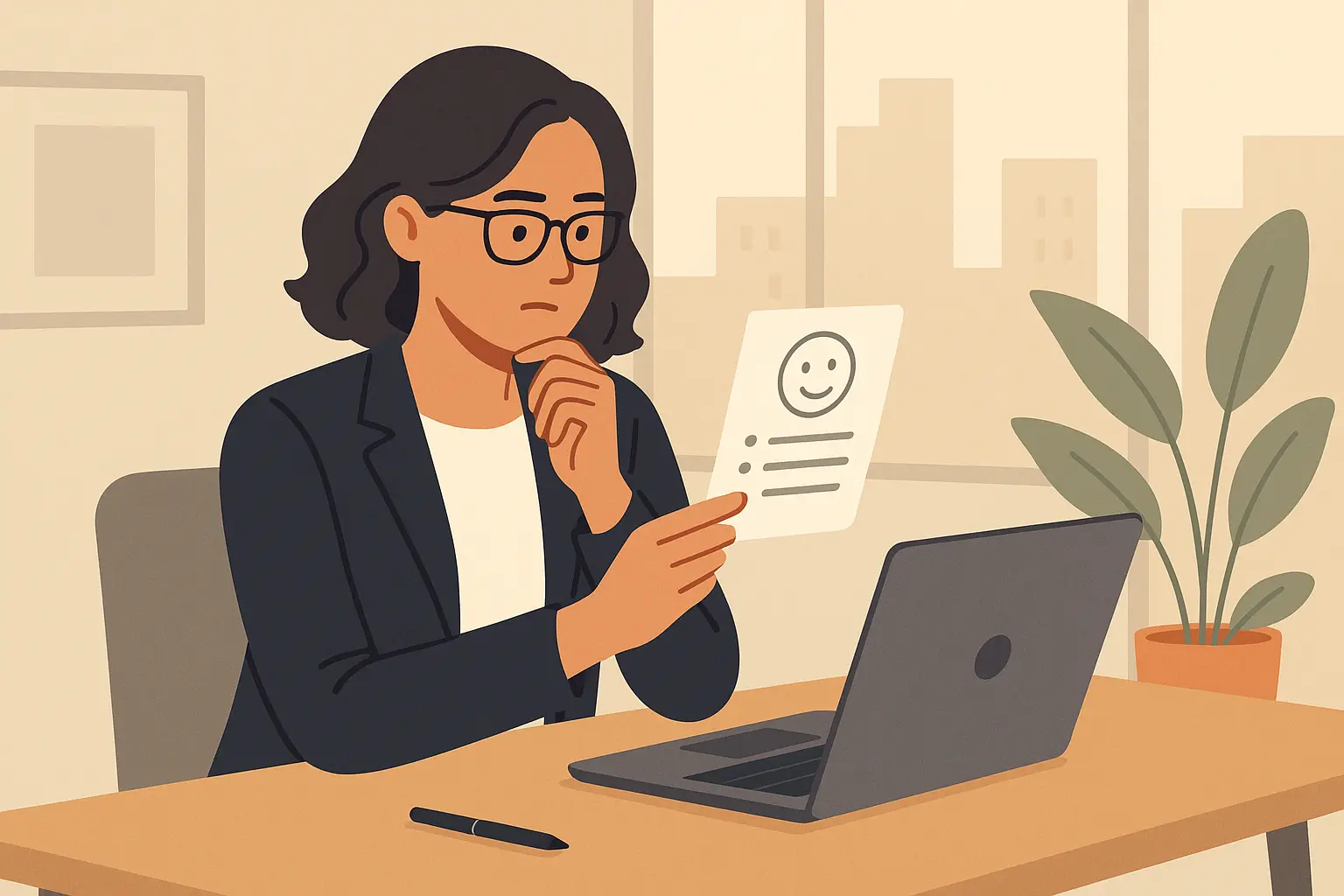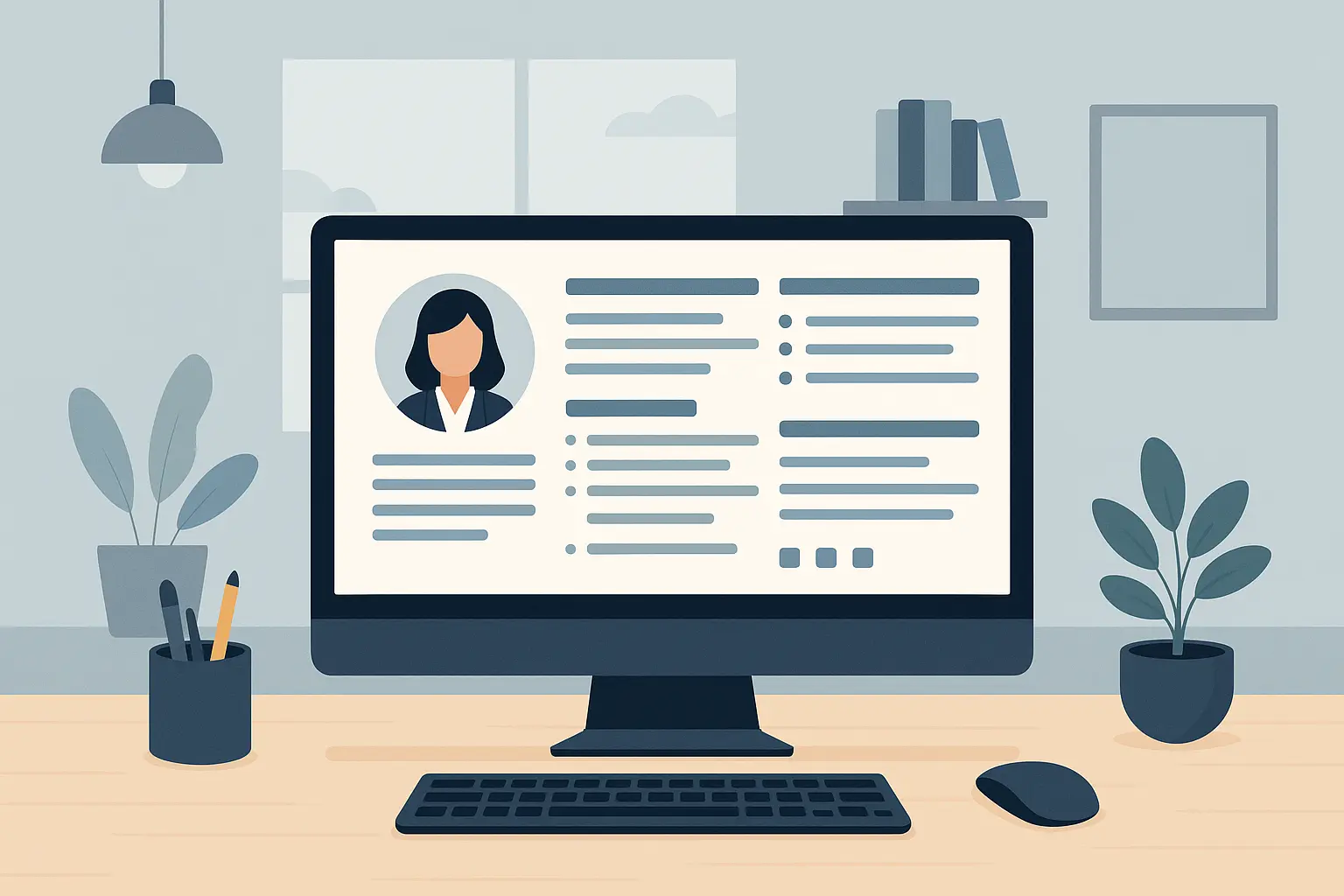The Follow-Up Game Everyone Gets Wrong

Walking out of an interview feeling great? Don’t celebrate yet. What happens next could make or break your chances of getting the job.
I’ve watched too many talented people lose opportunities because they treated the post-interview phase like an afterthought. They send one generic ‘thanks for your time’ email and then… nothing, missing the bigger picture of how to follow up after an interview in a way that keeps them top of mind.. Meanwhile, the smart candidates are building relationships, staying visible, and positioning themselves as the obvious choice.
With only 20% of candidates receiving job offers after interviews, understanding how to follow up after an interview with the right strategy isn’t optional—it’s your competitive edge. This isn’t about checking a politeness box. It’s about strategically positioning yourself as the candidate they can’t forget while building genuine professional relationships that extend far beyond a single job opportunity.
Table of Contents
- Crafting Follow-Up Emails That Actually Get Results
- Timing Your Follow-Up Without Looking Desperate
- Beyond Email: Creative Ways to Stay on Their Radar
- What to Do When Things Don’t Go as Planned
TL;DR
- Send your first email within 24 hours, but make it count with specific details from your conversation
- Personalize every message when you’ve interviewed with multiple people – generic emails are obvious and ineffective
- Weekly check-ins are acceptable if you haven’t heard back, but respect the timeline they gave you
- LinkedIn connections and thoughtful engagement can keep you visible without being pushy
- Handle rejection gracefully – it often leads to future opportunities or referrals
- Your follow-up strategy should match the company culture and industry norms
The Real Follow-Up Strategy
Forget the templates you found on Google. If you want to master how to follow up after an interview, remember it comes down to three things: timing, personalization, and adding value. Get these right, and you’ll stand out from the candidates who either don’t follow up at all or do it poorly.
The emails that work feel personal, add value, and demonstrate you were actually paying attention during the interview. Every element matters – from your subject line to your closing – and getting these details right can be the difference between getting the job and getting forgotten.
Just as crafting an effective cover letter requires personalization and attention to detail, your post-interview communication needs the same level of customization to stand out from generic templates. According to research from Apollo Technical, 86% of hiring managers say that a thank-you email or note after an interview has some influence on their decision-making process, making your follow-up communication a critical component of your interview success strategy.
Send That First Email (But Make It Count)
You have 24 hours to send your first follow-up. Anyone wondering how to follow up after an interview should start here—not because it’s polite, but because hiring managers often discuss candidates immediately after interviews. Your email can influence those conversations.
Skip the generic approach. Instead of “Thank you for your time,” try something that shows you were actually listening: “I keep thinking about what you said regarding the challenges with lead qualification…”
Your initial communication should go out within 24 hours of your interview, ideally the same day if your interview was in the morning. This timing keeps you fresh in their memory while demonstrating promptness and genuine interest. However, don’t sacrifice quality for speed – a well-crafted email sent 18 hours later beats a rushed one sent immediately.
What Actually Works:
“Hi Sarah,
Our conversation yesterday about your marketing team’s lead qualification challenges got me thinking. At my last company, we faced something similar and implemented a scoring system that increased qualified leads by 35%.
I’ve attached a brief overview of our approach—thought it might spark some ideas for your current initiatives.
Looking forward to potentially bringing this kind of strategic thinking to your team.”
This email works because it:
- References a specific conversation topic
- Offers something valuable
- Shows continued thinking about their problems
- Maintains professional enthusiasm without desperation
Subject Lines That Don’t Get Ignored
Your subject line determines whether your email gets opened or buried in an inbox. Skip the generic “Thank you for your time” approach that every other candidate uses. Instead, reference something specific from your conversation or mention the position title.
“Following up on our discussion about the Q4 marketing strategy” or “Thank you for the insights on [Company]’s expansion plans” work because they create instant recognition and relevance.
Getting Your Tone Right
The language you use reveals a lot about your personality and professionalism. You want to sound enthusiastic without being desperate, confident without being arrogant, and personable without being too casual. This balance is tricky, especially when you’re excited about the opportunity.
Your communication should sound like the professional version of yourself, not like someone else entirely. A big part of mastering how to follow up after an interview is striking the right balance in tone—enthusiastic, but never desperate. Use contractions naturally, vary your sentence length, and don’t be afraid to show some personality. If you made a connection over shared interests or experiences during the interview, it’s okay to reference that briefly.
Real personalization means showing you were present and engaged during your conversation. Reference specific projects they mentioned, challenges they’re facing, or goals they’re working toward. If they shared insights about company culture or upcoming initiatives, acknowledge those details.
Research shows that 49% of employers know within the first five minutes of an interview whether a candidate is a good fit, which means your follow-ups need to reinforce that positive first impression with specific, memorable details from your conversation.
Managing Multiple Interviewers
When you’ve met with several people during your interview process, your follow-up strategy becomes more complex but also more important. Each person you met has a different perspective on the role and different concerns about candidates.
Every interviewer should receive a unique email that references your specific conversation with them. The HR person might have focused on culture fit and benefits, while the hiring manager discussed technical requirements and team dynamics. Your communications should reflect these different conversations.
I’ve found it helpful to take notes immediately after each interview about what each person seemed most interested in or concerned about. This makes personalization much easier and more authentic when you’re writing your follow-ups.
While personalizing each email, you need to maintain consistent key messages about your qualifications and interest level. If you tell one interviewer you’re extremely excited about the role, don’t tell another you’re “somewhat interested.” Your core value proposition should remain the same across all messages, even as you tailor the specific details and examples to each person’s interests.
The Art of Patient Persistence
After that first email, the waiting game begins. And here’s where most people either disappear completely or turn into that annoying candidate who emails every other day.
Getting the timing right on your follow-up communications can feel like walking a tightrope. Send emails too quickly and you might seem overeager; wait too long and you risk being forgotten. I’ve learned that timing isn’t just about when you send emails, it’s about reading the situation and adapting your approach based on the feedback you receive (or don’t receive).
Understanding proper timing for follow-up communications is as crucial as knowing what to expect in a second interview, where your previous follow-up efforts may have successfully advanced your candidacy to the next stage. The importance of timely follow-up has become even more critical in today’s job market. According to “New recruitment rule forces employers to follow up with applicants” from HCA Magazine, Ontario employers will soon be required to notify interviewed candidates of their hiring status within 45 days, reflecting a broader push for improved communication between employers and job seekers.
The Sweet Spot: One Week
If you haven’t heard back after your initial follow-up, send a brief check-in after about a week. Keep it short and acknowledge they’re busy:
“Hi Sarah, just wanted to touch base about the marketing role. I know you’re swamped, but I’m still very interested and happy to answer any other questions that come up.”
That’s it. No need to rehash your qualifications or beg for updates. Weekly check-ins are acceptable if you haven’t heard back, but don’t start following up before their stated decision date, even if the waiting is killing you.
Respecting Their Timeline
If they said they’d decide by Friday, don’t start pestering them on Thursday. Wait until the following Tuesday, then send a polite nudge. This shows you actually listen—a quality that matters in any job.
This level of patience demonstrates you respect their process and can follow instructions – qualities that matter in any role. When you do follow up after their timeline has passed, acknowledge it gracefully without making them feel bad about the delay.
The challenge of timing follow-ups has become more complex due to changing candidate behaviors. Research shows that 57% of job seekers fail to send thank-you notes after an interview, which means your consistent, well-timed follow-ups can significantly differentiate you from other candidates.
Knowing When to Send Your Final Message
Sometimes you need to accept that it’s time to move on, but you can do so in a way that keeps doors open for the future. After a month of reasonable follow-ups, send one final email thanking them for their time and mentioning your continued interest in the company for future opportunities. Then move on, but keep that door cracked open.
This approach maintains positive relationships and often leads to referrals or consideration for other roles that might be a better fit.
Beyond Email: Getting Creative (Without Being Weird)
Email is standard, but smart candidates know how to use other channels without crossing into stalker territory. These alternative approaches aren’t about being gimmicky – they’re about showing initiative and finding natural ways to stay connected with your potential future colleagues.
The key is choosing methods that align with the company culture and industry norms while adding value to their professional lives. When done thoughtfully, these strategies can differentiate you from other candidates who stick to email-only communication.
Similar to how optimizing your LinkedIn profile can enhance your job search, strategic LinkedIn engagement after interviews can maintain professional visibility while building meaningful connections.
LinkedIn Is Your Friend
LinkedIn offers unique opportunities to maintain professional visibility without being intrusive. Unlike email, which lands directly in someone’s inbox demanding attention, LinkedIn engagement feels more natural and less pressured.
Connect with your interviewers within a few days of your interview. Skip the generic connection request—reference your conversation instead: “Great chatting about digital marketing trends yesterday. Would love to stay connected and follow your team’s innovative work.”
This approach feels natural and gives context for why you’re connecting, making acceptance much more likely.
Once connected, engage thoughtfully with their posts. Like and comment when you have something meaningful to add, but don’t go overboard. Share relevant articles that might interest them, especially if they relate to your interview discussion. This type of engagement shows you’re actively thinking about the industry and the challenges they face.
The Handwritten Note
In our digital world, a brief handwritten thank-you note can stand out—if it fits the company culture. Send it in addition to, not instead of, your email. Keep it short, professional, and on quality paper.
This approach works particularly well in traditional industries or when you’re applying for roles that value personal touch and attention to detail. However, be mindful that handwritten notes take time to arrive, so they shouldn’t contain time-sensitive information.
When Things Go Sideways
Not every interview leads to a job offer, and how you handle different outcomes can significantly impact your professional reputation and future opportunities. Whether you receive positive feedback, face rejection, or find yourself in interview limbo, your response should be strategic and professional.
I’ve learned that these moments often reveal more about your character than the interview itself, and handling them well can lead to unexpected opportunities down the road. Maintaining relationships and positioning yourself for future success matters regardless of the immediate outcome.
Just as knowing how to decline a job offer professionally protects your reputation, handling interview rejection gracefully can preserve valuable professional relationships for future opportunities.
The post-pandemic job market has created new challenges for both employers and candidates. According to “Why candidates are not showing up for interviews” from Business Management Daily, 28% of applicants had ghosted a job interview within the past year, and 76% of employers reported candidates ghosting them. This trend emphasizes the importance of professional communication and follow-through in today’s competitive market.
Getting Good News
Moving to the next round? Don’t get cocky. When you receive encouraging feedback or advance to the next round, it’s tempting to get overconfident or assume the job is yours. However, this is when your follow-up strategy becomes even more critical.
Confirm all the details within 24 hours, ask who you’ll be meeting, and prepare like your life depends on it. Each interaction should build on the previous one, showing growth in your understanding of the role and company while reinforcing why you’re the right choice.
If they’ve scheduled a second interview, confirm the details and mention any materials you’ll prepare or bring. If they’ve requested references or additional documentation, provide a timeline for when you’ll submit everything.
Handling Rejection Like a Pro
This is where most candidates either ignore the rejection email or send something bitter that burns bridges forever. Don’t be that person.
How you respond to rejection can be just as important as how you handle success. A gracious, professional response to a rejection email often impresses hiring managers and can lead to referrals, recommendations, or consideration for future roles.
Respond within 48 hours with something gracious:
“Thanks for letting me know, Sarah. I really enjoyed learning about your team’s approach to customer success. Hope our paths cross again—please keep me in mind for future opportunities.”
Short, professional, and classy. You’d be amazed how often this leads to referrals or consideration for other roles.
Gracious Rejection Response Template:
“Hi [Name], Thank you for letting me know about your decision regarding the [Position Title] role. While I’m disappointed, I completely understand that you need to choose the best fit for your team. I genuinely enjoyed our conversations about [specific topic discussed] and was impressed by [Company]’s commitment to [specific company value/initiative]. I’d love to stay connected and hope you’ll keep me in mind for future opportunities that might be a better match. Congratulations to whoever you selected – I’m sure they’ll do great work with your team.”
Want Feedback?
Wait a few days after your gracious response, then send a separate email asking for one or two specific areas where you could improve. Make it clear you’re seeking professional development advice, not trying to change their decision.
Ask for specific areas where you could improve, and emphasize that any insights would be valuable for your future interviews. Not everyone will respond, but when they do, the insights are usually gold.
The Silent Treatment
Sometimes you hear nothing. Radio silence. After a month of reasonable follow-ups, send one final email thanking them for their time and mentioning your continued interest in the company for future opportunities. Then move on, but keep that door cracked open.
Express genuine interest in staying connected and being considered for future roles that might be a better fit. Many companies keep notes about impressive candidates who weren’t quite right for a specific role, and these notes can lead to opportunities months or years later.
Your Follow-Up Foundation
Here’s the thing—your post-interview game is only as strong as everything that came before it. If you landed the interview with a killer resume that showcased your value clearly, your follow-ups become the natural next step in demonstrating that same attention to detail and professionalism.
Just as Resume Builder IQ helps you create compelling, ATS-optimized resumes that land interviews, the same attention to detail and professional presentation should carry through to every follow-up email you send. The platform’s AI-powered approach to tailoring resumes for specific roles mirrors the personalization strategy that makes follow-up emails successful.
The comprehensive approach that Resume Builder IQ brings to resume optimization – from keyword integration to creating ATS-friendly resumes – should inspire the same thoroughness in your post-interview strategy. Every touchpoint with potential employers needs to reinforce your value as a candidate, and Resume Builder IQ’s proven system for professional presentation can guide your follow-up communications as well.
The same strategic thinking that goes into crafting an ATS-optimized resume should guide your follow-up approach. Every touchpoint needs to reinforce why you’re the right choice.
Ready to build the foundation for interview success? Create your optimized resume with Resume Builder IQ today and start landing the interviews that lead to meaningful follow-up opportunities.
The Bottom Line
Great follow-up isn’t about perfect templates or rigid rules. If you want to truly stand out, learn how to follow up after an interview in a way that builds real professional relationships while staying memorable for the right reasons. Be genuine, add value, respect their process, and handle every outcome with class.
Mastering the follow-up process isn’t about following rigid rules or using perfect templates – it’s about building genuine professional relationships while strategically positioning yourself as the candidate they can’t forget. The most successful follow-ups feel natural and add value to the conversation, whether that’s through thoughtful email communication, strategic LinkedIn engagement, or gracious handling of different outcomes.
Remember that every interaction is an opportunity to demonstrate the qualities that make you a great hire: professionalism, attention to detail, genuine interest, and the ability to build relationships. These skills matter just as much in your follow-up communications as they do in the role itself, so approach each message with the same care and consideration you’d bring to important work projects.
Do this right, and you’ll stand out from the crowd of candidates who either disappear after the interview or follow up in forgettable ways. Your future self will thank you for the extra effort.

